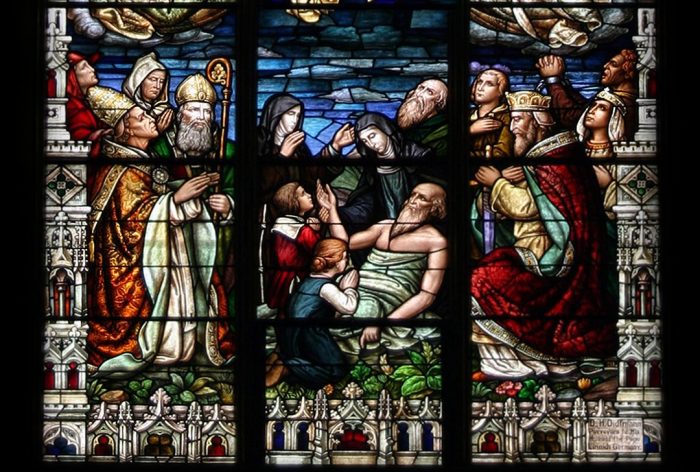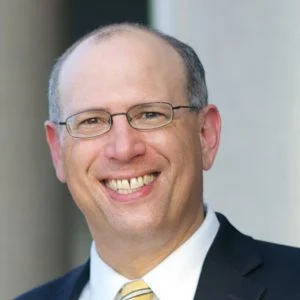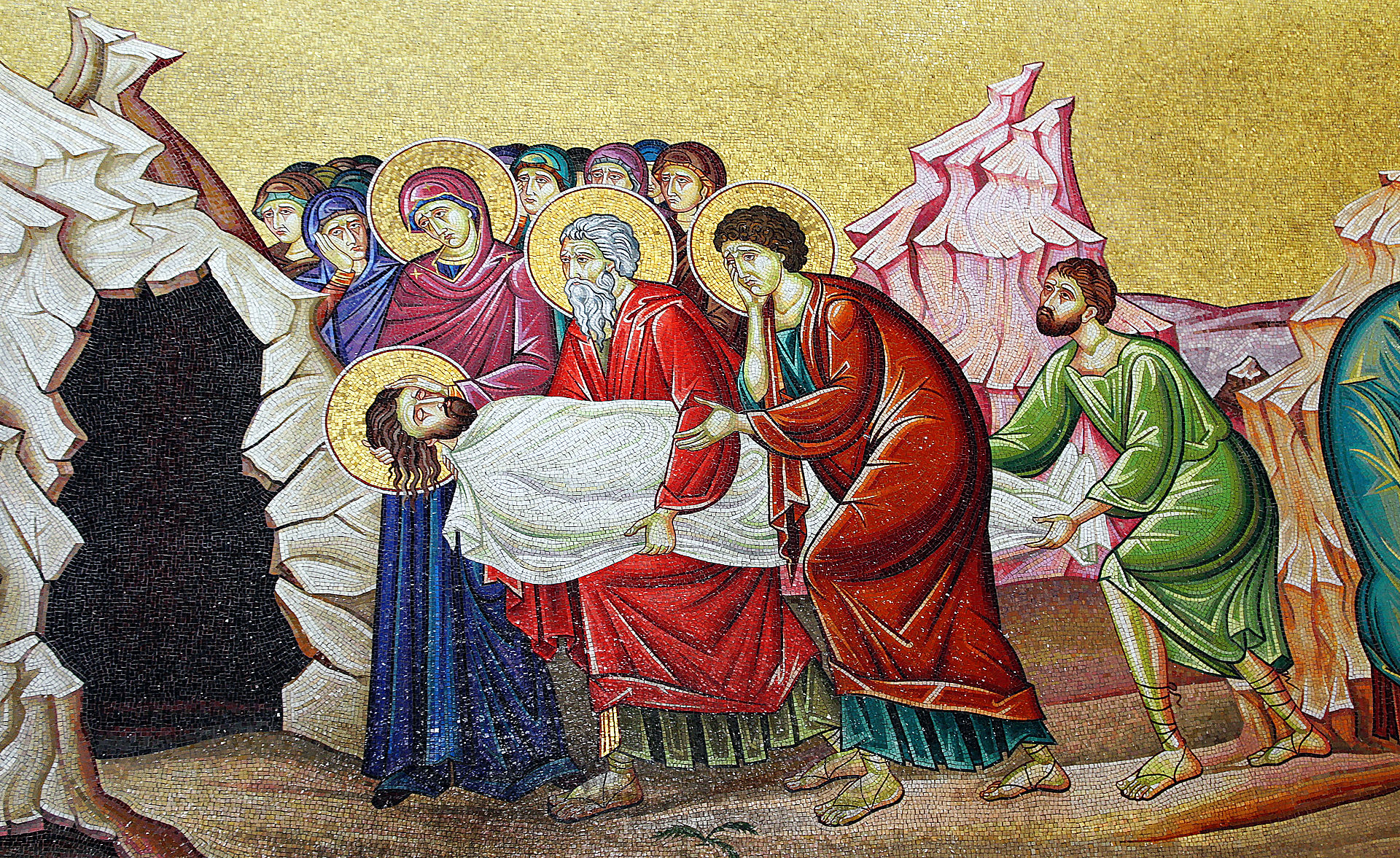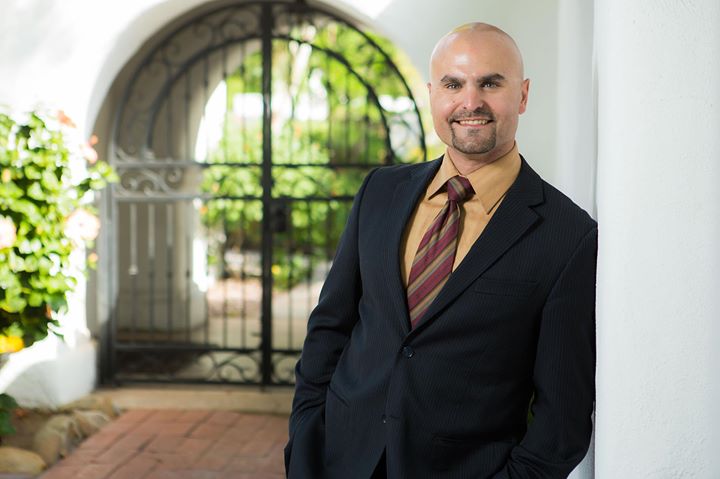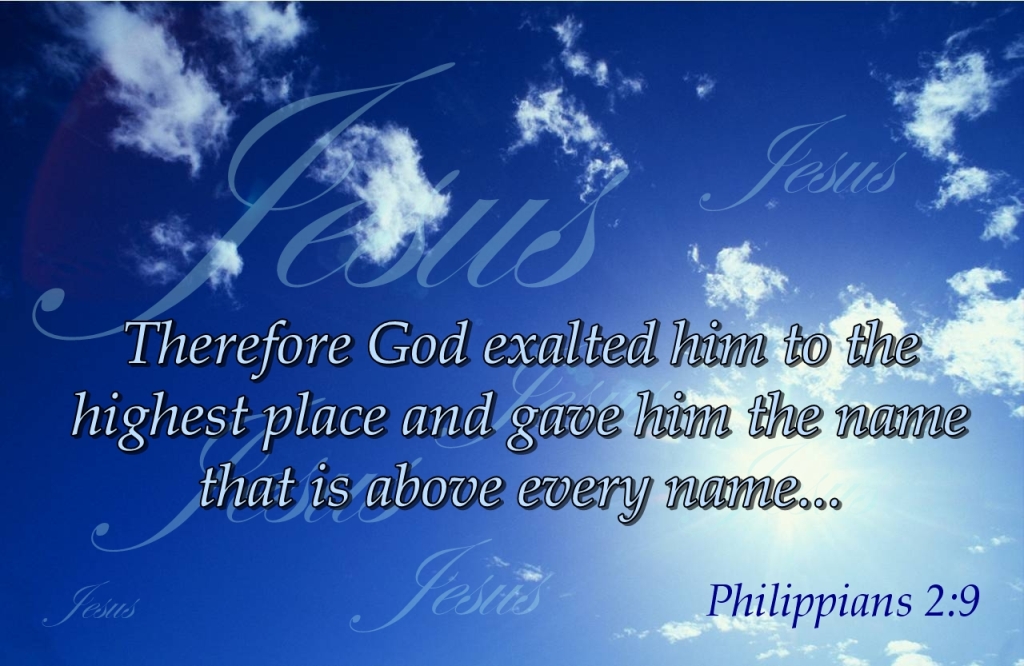“What does the Christian faith have to say about death? The message is direct and uncomplicated: death exists, it is the most serious of our problems, and Christ has defeated it! A very decisive human event took place with the result that human death is no longer the same. In faith, we are given this incredible news that only the coming of God himself on earth could accomplish. Like a serpent whose poison can only anesthetize its victim for a short time but cannot kill him, death has lost its sting. “Death has been swallowed up in victory. Where, O death, is your victory? Where, O death, is your sting?” (1 Cor 15:54–55).
This news about death is proclaimed in the Gospel by a Roman centurion: “And when the centurion, who stood facing him, saw that in this way he breathed his last, he said, ‘Truly this man was God’s Son!’” (Mk 15:39). This centurion knew all there was to know about combats and combatants, and he immediately understood that the loud cry—the battle cry, as it were—that Jesus uttered when he breathed his last was the cry of a victor and not of a defeated victim.
How, then, did Jesus overcome death? Not by avoiding it, but by accepting it, by savoring all its bitterness. Jesus overcame death from within, not from outside. Let us recall the words of today’s second reading: “In the days of his flesh, Jesus offered up prayers and supplications, with loud cries and tears, to the one who was able to save him from death” (Heb 5:7). Our high priest is certainly not one who is unable to understand our weaknesses, especially our fear of death. He knows very well what death is! Three times the Gospel records how Jesus was “greatly disturbed,” and two of them were in response to someone’s death (see Lk 7:13; Jn 11:33). At Gethsemane, Jesus fully experienced human anguish in the face of death. He “began to be distressed and agitated,” the Gospel tells us (Mk 14:33)—two words that indicate profound bewilderment, a kind of solitary terror, like someone who feels cut off from human society. Jesus did not face death like someone with “an ace up his sleeve” to pull out at the right moment. At times during his life, Jesus showed us that he knew he would rise again, but this was a special knowledge that he was not privy to share with, when, and as he wished. His cry on the cross, “My God, my God, why have you forsaken me?” (Mt 27:46), shows that that certitude was not humanly available to him at that moment.
Jesus faced death as we do, like someone who crosses a threshold in the dark and cannot see what is beyond. He was sustained only by his steadfast faith in the Father, which made him exclaim: “Father, into your hands I commend my spirit!” (Lk 23:46).
* * *
What happened when Jesus crossed that dark threshold? The Fathers of the Church explained it through imagery. Death, like a voracious animal, attacked even Christ and devoured him as if he, too, like every other human being, was in its power. But like a fish hooked after taking the bait, death itself became ensnared. This particular human—the Word of God who, by nature, cannot die—was made of iron. In biting him, the fangs of death were broken forever. In a homily given on Good Friday, a bishop of the second century exclaimed: “As his Spirit was not subject to death, Christ destroyed death which was destroying man” (Melito of Sardis, On Pascha, 66).
Christ overcame death by dying—mortem nostram moriendo destruxit. This is the paschal cry rising in unison from both the Eastern and Western Churches today. Death is no longer a wall, smashing everything that crashes into it. It is a passage—that is, a Passover. It can be likened to a “Bridge of Sighs” beyond which we enter into real life where there is no death.
The most awesome part of the Christian message is that Jesus did not die just for himself. Unlike Socrates, Jesus did not simply leave us an example of heroic death. He did something quite different: “One has died for all” (2 Cor 5:14), St. Paul exclaimed, and elsewhere Scripture puts it “that he might taste death for everyone” (Heb 2:9). These are extraordinary statements, and the only reason we do not shout for joy when we hear them is that we do not take them seriously and literally enough. “All of us who have been baptized into Christ Jesus were baptized into his death” (see Rom 6:3). We have entered into a real, even if mystical, relationship with that death. We have become sharers in death, so much so that St. Paul is bold enough to proclaim in faith, “You have died, and your life is hidden with Christ in God” (Col 3:3), and again, “One has died for all; therefore all have died” (2 Cor 5:14).
As a consequence, we are no longer our own, but we belong to Christ (see 1 Cor 6:19ff), and whatever is Christ’s belongs also to us, even more than what is our own. We participate in Christ’s death even more than in our own death. St. Paul says: “The world or life or death or the present or the future—all belong to you, and you belong to Christ, and Christ belongs to God” (1 Cor 3:22–23). Death belongs to us more than we belong to death. In Christ, we, too, have defeated death.
For Christianity, the most important factor concerning death is not that we must die but that Christ has died. The fear of death does not break through to our human conscience, but Christ’s death does. Jesus came on earth, not to escalate our fear of death, but to free us from it. The Son of God shared fully in our flesh and blood “that through death he might destroy the one who has the power of death, that is, the devil” (Heb 2:14).
Perhaps the most frightening aspect of death is the solitude with which we must face it. We face it alone. Martin Luther said, “No man can die in another’s place; each must personally fight his own battle against death. No matter how hard we cry out to those around us, each one of us must face it alone” (Luther, Weimarer Ausgabe, vol. 10, 31ff). But this is no longer entirely true. “If we have died with him, we will also live with him” (2 Tm 2:11). It is possible to die with someone!
This demonstrates the gravity of the problem euthanasia presents from the Christian point of view. Euthanasia deprives human death of its link to Christ’s death. It strips it of its paschal nature, changing it back to what it was before Christ. Death is deprived of its majestic awesomeness and becomes a human determination, a decision of finite freedom. It is literally “profaned”—that is, deprived of its sacredness.
* * *
From time immemorial humans have never ceased to seek countermeasures to offset death. One remedy, characteristic of the Hebrew Testament, is to live on in one’s children. Another is fame. A pagan poet tells us, “I shall not completely die” (non omnis moriar); “I have raised a monument more lasting than bronze” (exegi monumentum aere perennius) (Horace, Odes, III, XXX).
In our day, reincarnation is a new and widespread pseudo-remedy. The Letter to the Hebrews tells us: “It is appointed for mortals to die once, and after that the judgment” (Heb 9:27). Only once, semel! The doctrine of reincarnation is incompatible with the Christian faith, and besides, reincarnation, as it is presented in Western countries, is simply the result of an enormous misunderstanding. Originally, as in all religions professing it, reincarnation was not intended to be an extra installment of life but of suffering. It was not a cause for consolation but for fear. It was as if to say, “Be careful, if you do evil, you will be born again to atone for it!” Reincarnation was both a threat and a punishment. It was like telling a prisoner who had almost completed his sentence that, upon further consideration, the sentence was doubled and had to be repeated. In modern times, everything has been adapted to our materialistic and secularized Western mentality. Reincarnation, conceived before Christ’s Resurrection, has become an alibi for people to elude the seriousness of both life and death.
The real remedy is that which the Church recalls on this day every year: “One has died for all!” “Christ died for the sake of all!” To fortify ourselves for death, all we have to do is draw close to Christ and anchor ourselves to him in faith like a boat anchored to the bottom of the sea to withstand an impending storm. In the past, numerous ways were proposed for getting ready for death. The main way was to think about death often, to describe it and depict it in its most dreadful particulars. However, the important thing is not so much to keep our death in mind but to keep Christ’s death in mind, not a skull, but the crucifix. Our degree of union with him will be our degree of certainty in the face of death.
Our attachment to Christ must far exceed our attachment to anything else: our work, our loved ones—everything—so that nothing will be strong enough to hold us back when the time comes for us “to depart” (2 Tm 4:6). When St. Francis of Assisi was close to death, after having himself reached this perfect degree of union with Christ, he added this verse to his Canticle of Creation: “Praised be you, my Lord, through our sister, bodily death, from whom no living man can escape.” When told that his end was approaching, Francis exclaimed: “Welcome, my Sister Death!” Death is no longer the same; it has become our sister.
Francis was not alone in this sentiment. After the last World War, the Last Letters from Stalingrad was published (1950). This was a collection of letters written by German soldiers, all of whom perished in the siege of Stalingrad.
The letters were in the last convoy to set out before the final onslaught by the Red Army. In one of those letters, a young soldier wrote these words to his mother: “I do not fear death. My faith gives me this wonderful assurance!”
* * *
Before he died, Jesus instituted the Eucharist, and in doing so anticipated his own death. He showed that his death was not just a chance occurrence or the consequence of someone else’s decision. He gave death meaning, a meaning that he, not his enemies, determined. Jesus transformed death into a memorial of the New Covenant, an expiation for sin, the supreme gift of love to the Father on behalf of all people. “Take this,” he said, “all of you, and eat of it, for this is my body, which will be given up for you.” At every Mass, we, too, are given this wonderful opportunity of giving meaning to our death before it takes place, of uniting ourselves to Christ in order to make it a living sacrifice to him, a libation to be poured out, as St. Paul says (see 2 Tm 4:6).
One day toward evening, while sitting by the lake, Jesus said to his disciples, “Let us go across to the other side!” (Mk 4:35). The time will come when he will say those same words to us: “Let us go across to the other side.” Blessed are those who, like the disciples, are ready to take him “just as he was,” and set sail with him in faith.
Today, profound gratitude erupts from the hearts of believers and all humanity. Thank you, Lord Jesus Christ, in the name of those who know and those who don’t yet know that you died for them. Thank you for sweating blood for us, for your distress, and your cry of victory from the cross. Embrace those now departing this world and repeat to them what you said to the Good Thief on the cross: “Today you will be with me in Paradise!” (Lk 23:43). “Stay with us, Lord, when evening comes and our day will be nearly over” (see Lk 24:29).
Love,
Matthew


